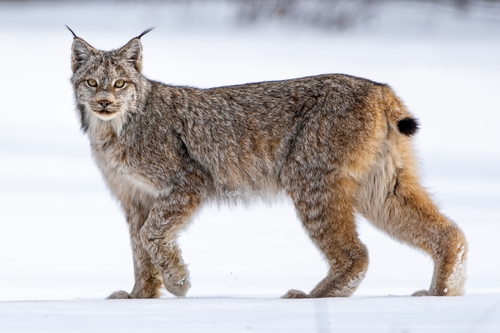
Canada Lynx
The elusive Canada lynx, with its tufted ears and snowshoe-like paws, prowls through the dense boreal forests of North America. Its survival dance with snowshoe hares showcases nature's intricate balance, as this solitary hunter relies on the ebb and flow of hare populations for sustenance.
14 years
Lifespan
9.0 kg
Weight
Length: 51 cm; Height: 33 - 110 cm
Size
Brown, Yellow, Red
Color
21-33 months
Age of Sexual Maturity
12 weeks
Age of Weaning
50 mph
Top Speed
Least Concern
Conservation Status
Stable
Population Trend
Characteristics
Lynx canadensis, commonly known as the Canada lynx, is a medium-sized wild cat native to North America's boreal forests. It has long, tufted ears, a short tail, and large, furry paws that act like snowshoes. It primarily preys on snowshoe hares, with its population closely linked to hare abundance.
Distribution Range of the Canada Lynx
The Lynx canadensis, commonly known as the Canada lynx, is native to North America. Its geographical distribution primarily includes Canada and Alaska, extending into the northern parts of the contiguous United States, such as the Rocky Mountains, the Great Lakes region, and parts of the northeastern U.S.
Canada Lynx's Habitat
Environmental Conditions
The Canada lynx typically inhabits boreal forests, also known as taiga, which are characterized by cold climates with long winters and short, mild summers. These regions are predominantly covered by coniferous trees such as spruce, fir, and pine.
Ecological Niche
The Canada lynx is a specialist predator, primarily preying on snowshoe hares. Its habitat is often dense with underbrush, providing ample cover for hunting. The species is well-adapted to snowy environments, with large, fur-covered paws that act like snowshoes to support walking on snow. Variations in habitat can occur based on local prey availability and environmental conditions, but the lynx's association with snowshoe hares is a key factor in its ecological niche.
Copyright @ Nature Style Limited. All Rights Reserved.
 English
English